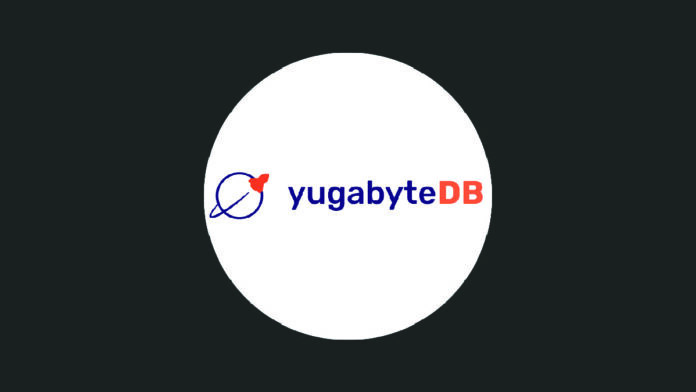Description
Introduction of Database Architecture with YugabyteDB
YugabyteDB is a high-performance, distributed SQL database designed to manage both relational (SQL) and non-relational (NoSQL) workloads in a distributed and highly available manner. This course provides a deep dive into the architecture of YugabyteDB, exploring how its distributed nature enables scalability, fault tolerance, and performance optimization. By understanding YugabyteDB’s architecture, you will be able to design and deploy applications that can scale horizontally across multiple regions and handle large volumes of data with ease.
Prerequisites of Database Architecture with YugabyteDB
- Basic understanding of database systems, particularly SQL and NoSQL.
- Familiarity with distributed systems concepts (such as replication, sharding, and consensus).
- Basic knowledge of cloud infrastructure (optional but beneficial).
- Experience in managing databases or working with any distributed database systems.
Table of Contents
- Introduction to Distributed Databases
1.1 What is a Distributed Database?
1.2 Characteristics and Benefits of Distributed Databases
1.3 Why Choose YugabyteDB for Distributed Applications? - YugabyteDB Architecture Overview
2.1 Core Components of YugabyteDB
2.2 YugaByte Distributed Architecture: Key Features
2.3 Understanding the Role of Master and Tablet Servers
2.4 How YugabyteDB Enables Multi-Region and Multi-Cloud Deployments - Data Distribution and Sharding in YugabyteDB
3.1 Horizontal Scaling: The Concept of Sharding
3.2 How YugabyteDB Distributes Data Across Nodes
3.3 Understanding Tablet Servers and Data Replication
3.4 Shard Allocation and Load Balancing
3.5 Fault Tolerance and Data Availability(Ref: YugabyteDB for Developers: Mastering SQL and NoSQL Workloads) - Replication and High Availability in YugabyteDB
4.1 The Importance of Replication in Distributed Systems
4.2 YugabyteDB’s Master and Tablet Replication Model
4.3 Write-Ahead Logs (WAL) and Consistency Guarantees
4.4 Automatic Failover and Data Recovery
4.5 Ensuring High Availability in Distributed Deployments - Distributed SQL Layer in YugabyteDB
5.1 Overview of the Distributed SQL Engine
5.2 How SQL Queries are Processed in a Distributed Database
5.3 Transaction Management in Distributed SQL
5.4 Multi-Version Concurrency Control (MVCC)
5.5 Distributed Transactions and ACID Compliance - NoSQL API Layer in YugabyteDB (YCQL)
6.1 The YCQL API: Combining SQL and NoSQL Benefits
6.2 Key Differences Between YCQL and Traditional SQL
6.3 Working with JSON and Flexible Schema in YCQL
6.4 Scaling NoSQL Workloads in YugabyteDB
6.5 Consistency and Availability in NoSQL Workloads - Data Consistency and Isolation in Distributed Systems
7.1 CAP Theorem and YugabyteDB’s Approach
7.2 Strong Consistency vs. Eventual Consistency
7.3 YugabyteDB’s Consensus Protocol: Raft
7.4 Configuring Isolation Levels and Transaction Consistency
7.5 Handling Conflicts and Data Divergence in a Distributed Database - Performance Optimization in Distributed Databases
8.1 Performance Bottlenecks in Distributed Systems
8.2 Query Optimization and Indexing in YugabyteDB
8.3 Shard Rebalancing and Load Distribution
8.4 Optimizing Write and Read Latency in a Distributed Environment
8.5 Caching and In-Memory Capabilities - Scaling YugabyteDB for High Traffic Applications
9.1 Horizontal Scaling with YugabyteDB: Scaling Out vs. Scaling Up
9.2 Adding More Nodes and Managing Cluster Growth
9.3 Regional and Multi-Cloud Scaling Strategies
9.4 Handling Traffic Spikes and Ensuring Performance Under Load
9.5 Monitoring and Auto-Scaling in Distributed YugabyteDB Deployments - Security Considerations in Distributed Deployments
10.1 Security Challenges in Distributed Systems
10.2 YugabyteDB’s Security Model: Authentication and Encryption
10.3 Securing Data in Transit and at Rest
10.4 Role-Based Access Control (RBAC) and Permissions
10.5 Auditing and Compliance in Distributed Databases - Case Studies and Real-World Use Cases
11.1 Building Scalable E-Commerce Platforms with YugabyteDB
11.2 High Availability Applications for Financial Services
11.3 Global Multi-Region Applications with Low Latency
11.4 Use Case: Migrating Legacy Systems to YugabyteDB
11.5 Case Study: Social Media Platforms with Distributed Data Storage - Conclusion and Next Steps of Database Architecture with YugabyteDB
12.1 Recap of YugabyteDB Architecture Concepts
12.2 Best Practices for Designing Distributed Applications
12.3 Exploring Advanced Features and Future Enhancements
12.4 Resources for Further Learning
Conclusion
By the end of this course, participants will have a strong understanding of YugabyteDB’s distributed architecture and how it enables high-performance, scalable, and highly available applications. You will gain hands-on knowledge of configuring and managing distributed databases, optimizing performance, and ensuring data consistency across global deployments. The lessons from real-world use cases will provide practical insights into leveraging YugabyteDB for building applications that require both SQL and NoSQL functionality, making it a versatile choice for modern distributed systems.







Reviews
There are no reviews yet.